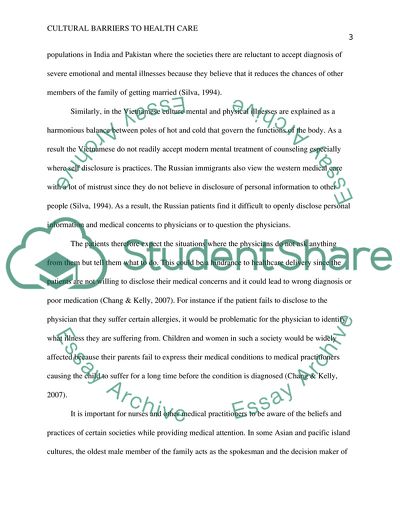Cite this document
(Cultural Barriers to Health Care Essay Example | Topics and Well Written Essays - 1250 words, n.d.)
Cultural Barriers to Health Care Essay Example | Topics and Well Written Essays - 1250 words. https://studentshare.org/education/1839210-investigate-barriers-to-health-care
Cultural Barriers to Health Care Essay Example | Topics and Well Written Essays - 1250 words. https://studentshare.org/education/1839210-investigate-barriers-to-health-care
(Cultural Barriers to Health Care Essay Example | Topics and Well Written Essays - 1250 Words)
Cultural Barriers to Health Care Essay Example | Topics and Well Written Essays - 1250 Words. https://studentshare.org/education/1839210-investigate-barriers-to-health-care.
Cultural Barriers to Health Care Essay Example | Topics and Well Written Essays - 1250 Words. https://studentshare.org/education/1839210-investigate-barriers-to-health-care.
“Cultural Barriers to Health Care Essay Example | Topics and Well Written Essays - 1250 Words”. https://studentshare.org/education/1839210-investigate-barriers-to-health-care.


